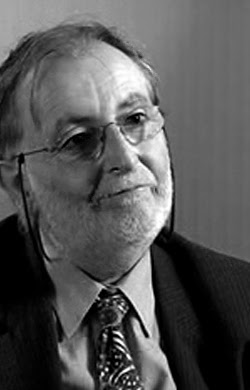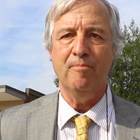Two senior Capitol Hill Republicans plan to introduce a congressional resolution calling for full disclosure of all U.S. government’s records related to the assassination of President John F. Kennedy in 1963.
Rep. Walter Jones (R-N.C) and Sen. Charles Grassley (R-Ia.) will introduce their JFK resolution before the end of the month, according to Jones.

Walter Jones, Republican of North Carolina
“I want to make sure that the information that is owed the American people is made available,” the veteran North Carolina conservative said in an exclusive interview with AlterNet. “The American people are sick and tired of not being given the truth. “
The JFK Records Act of 1992 mandated full disclosure of all government records related to the assassination within 25 years. Some four million pages of records were released in the late 1990s and early 2000s. Another 100,000 pages of assassination-related material from a dozen government agencies must be made public by public by the statutory deadline of October 26, 2017.
Under the law, the CIA, FBI and other government agencies can postpone release of still-secret JFK records after October 26–but only with the written permission of the president.
“We going to take a very positive approach and thank the agencies that have the information and are making it public,” Jones said. “At the same time we want to put some pressure on the agencies to release all the information they have.”
CIA Hedges
The CIA declined to say if it plans to seek postponement of the release of the Agency’s remaining JFK records.
“CIA continues to engage in the process to determine the appropriate next steps with respect to any previously-unreleased CIA information,” said spokesperson Nicole de Haay in a written statement released Thursday.
The unreleased records include CIA files on two senior officers involved in assassinations and four Watergate burglars, as well as the secret congressional testimony of numerous JFK witnesses.
“I hope they will not request any postponement,” Jones said in the telephone interview. “We’re talking about something that happened fifty four years ago.”
While JFK scholars and journalists have called on Trump to “give us the full story of the JFK assassination,” Jones and Grassley are the first elected officials to lend their clout to the cause.
Jones stressed that the JFK Records Act was approved by a vote of 435-0 in October 1992.
“The first President Bush signed this law and everybody in Congress, Republican and Democrat, voted for it,” Jones said.
Jones said he and Grassley plan to thank Bush and enlist the support of all the members of the House and Senate who voted for the JFK Records Act in 1992, including House Majority Leader Nancy Pelosi (D-Calif.)


 Both the Church Committee* and the House Select Committee on Assassinations gained access to the CIA Office of Security files of Lee Harvey Oswald. In 1993, despite a directive from CIA Director Robert Gates seeking an all-encompassing search of ALL CIA components for ANY material/records relevant to the assassination of President Kennedy, the Oswald OS files remained hidden. This huge search by CIA did not surface Oswald’s security files and the Assassination Records Review Board remained uninformed about their existence. Not until 1997 when an ARRB staffer stumbled across evidence that two previous congressional investigations had access to these files did CIA “discover” them. CIA told the ARRB that the reason the Oswald security files were not previously located was because those records were not at the Agency Archival Record Center in Alexandria, VA; they were in fact at CIA HQS in Langley within Office of Security Archival Holdings. How were they missed in the Gates search of 1993?
Both the Church Committee* and the House Select Committee on Assassinations gained access to the CIA Office of Security files of Lee Harvey Oswald. In 1993, despite a directive from CIA Director Robert Gates seeking an all-encompassing search of ALL CIA components for ANY material/records relevant to the assassination of President Kennedy, the Oswald OS files remained hidden. This huge search by CIA did not surface Oswald’s security files and the Assassination Records Review Board remained uninformed about their existence. Not until 1997 when an ARRB staffer stumbled across evidence that two previous congressional investigations had access to these files did CIA “discover” them. CIA told the ARRB that the reason the Oswald security files were not previously located was because those records were not at the Agency Archival Record Center in Alexandria, VA; they were in fact at CIA HQS in Langley within Office of Security Archival Holdings. How were they missed in the Gates search of 1993?











